Unpublished documents
For a selection of unpublished works in English and German please click here.
Publications by Karl
-
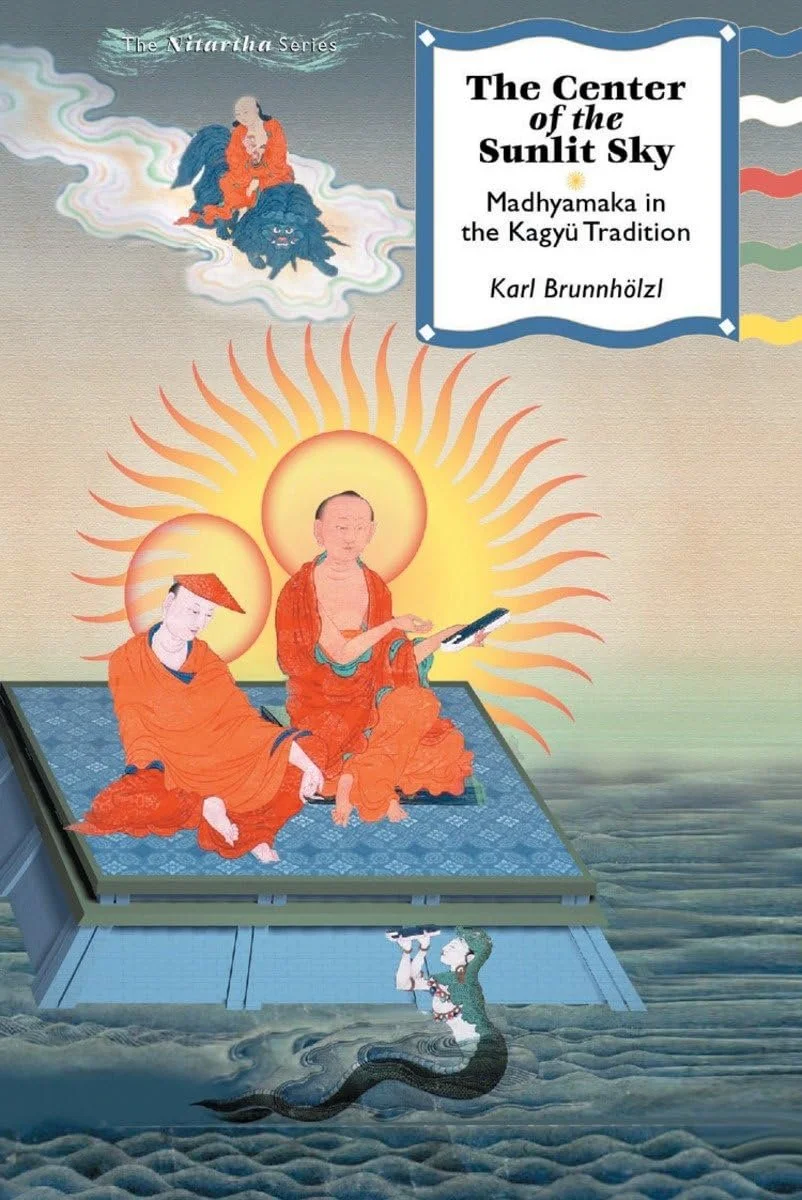
The Center of the Sunlit Sky
What is this book about?
The Center of the Sunlit Sky shows that Madhyamaka does not have to be dry, overly intellectual, and opaque but can be an everyday practical tool that works with all of our experiences in life. The book not only follows the original Indian sources and the distinct views in the Madhyamaka commentaries in the Kagyu School of Tibetan Buddhism but also contextualizes and adapts these materials for a contemporary audience, combining Madhyamaka reasoning’s assault on our cherished belief systems with the practical relevance of Madhyamaka as a mind training. In this way, Madhyamaka can serve to relinquish our suffering and reveal our innate wisdom.
Who is this book for?
This book is for people who wish to understand the unique Kagyü view of Madhyamaka and also want to apply Madhyamaka in meditation and as a tool to work with everyday-life issues. It helps to see that Madhyamaka is not about adding more intellectual headaches, but loosening up and letting go of everything that gives us headaches in the first place. From a practical point of view, Madhyamaka is about identifying our own rigid belief systems, how they cause us trouble, and how we can dissolve them into open-mindedness and compassion.
Learn more & buy
Related upcoming event
-

Straight From the Heart
What is this book about?
This book is an anthology of poems or songs of realization, meditation instructions, and a few more philosophical treatises by forty authors coming from the major strands of Indian Mahāyāna and Vajrayāna Buddhism and all four Tibetan Buddhist schools, spanning two thousand years of Buddhist thought in those two countries. Some impress through their beautiful poetry or powerful imagery, others through their profound pith instructions. Yet others share very personal advice for life or serve as immediate and profound practice instructions. Several are just delightfully unconventional or even outrageous.
Who is this book for?
It is of general interest to anybody interested in the Buddha’s teachings on how to explore and work with mind in all its many facets. Depending on different capacities and needs, such instructions come in many different forms. This book may serve as an overview of the varieties of styles that great Indian and Tibetan masters of different backgrounds employed in order to address the particular life situations of different beings and guide them to realize the nature of their minds. Thus it is intended as a contribution to a nonsectarian outlook on authentic Buddhist teachings.
Learn more & buy
-

Luminous Heart
What is this book about?
All living beings are equally and naturally endowed with the potential to realize the innate true state of their mind, called “buddha nature.” This book explains the most fundamental message of the Buddhist teachings, found in all traditions, that mind’s primordially pure ease and goodness is only temporarily obscured by our ordinary states of mind. It can be rediscovered through transforming these states into the spontaneous display of the wisdom and altruistic activity of a Buddha, making the transition from deluded and limited states of mind to the unlimited experience of mind’s basic awareness, free from any concerns and full of compassion. The potential for this is obscured in ordinary beings, but through practicing the methods to uncover it, is revealed as mind’s innate freedom.
Who is this book for?
It is of general interest to anybody interested in the relationship between the Indian Mahāyāna traditions of Yogācāra, Madhyamaka, and the teachings on buddha nature and how they were understood in India and Tibet. The book also attempts to address common misconceptions about these traditions and their teachings. In particular, it discusses the unique view of the Third Karmapa, which is beyond the (often sectarian) boundaries of Rangtong (“self-empty”) and Shentong (“other-empty”) and considered essential in the Kagyü lineage.
Learn more & buy
Related upcoming event
-

In Praise of Dharmadhātu
What is this book about?
This book is primarily about buddha nature—here called “dharmadhātu”—the potential of all beings to awaken to their mind’s true nature, thus freeing themselves from suffering with the ability to do the same for others. The great Buddhist master Nāgārjuna is famous for his works on Madhyamaka in the West, but his In Praise of Dharmadhātu is largely unknown. The book explores the scope, contents, and significance of Nāgārjuna’s scriptural legacy in India and Tibet, mainly focusing on said praise, which shows how buddha nature exists in all beings, how it is temporarily obscured, and how it can be revealed. The themes of this text are brought to a deeper level through a brief “history” of mind’s luminous nature, the commentary by the Third Karmapa, Rangjung Dorje (1284–1339), and an overview of the Karmapa’s basic outlook.
Who is this book for?
It is of general interest to anybody interested in the teachings on buddha nature—the natural propensity for enlightenment in all living beings—and how they were presented in India and Tibet. In particular, the book serves to broaden our awareness of the vast scope of Nāgārjuna’s writings and discusses the unique view of the Third Karmapa, which is considered essential in the Kagyu lineage.
Learn more & buy
-
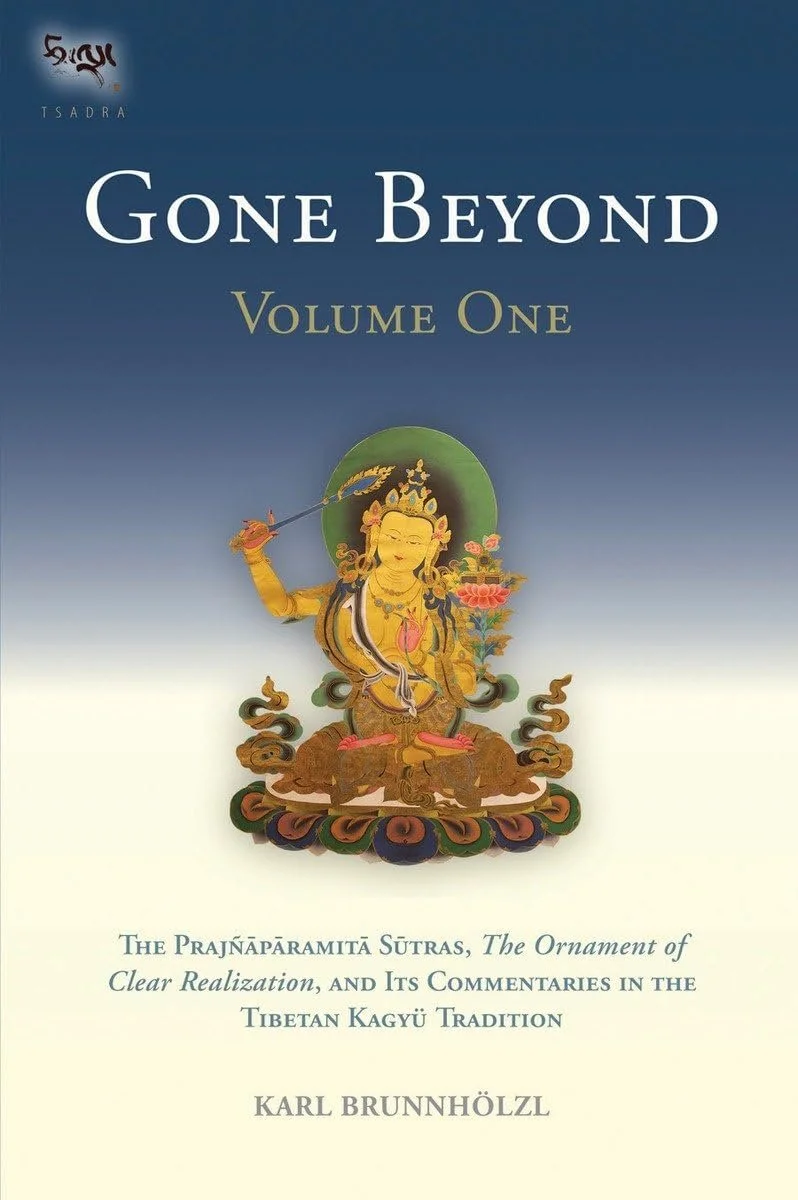
Gone Beyond Vol. I and Vol. II
What are these books about?
This study of The Ornament of Clear Realization (Abhisamayālaṃkāra) and its commentaries in the Tibetan Kagyü School includes translations of Maitreya’s text and its commentary by the Fifth Shamarpa, supplemented by excerpts from the commentaries by the Third, Seventh, and Eighth Karmapas and others. It closes a long-standing gap in the scholarship on the prajñāpāramitā sūtras and the literature on paths and bhūmis.
The Ornament of Clear Realization summarizes all the topics in the vast prajñāpāramitā sūtras. Resembling a zip-file, it only comes to life through its Indian and Tibetan commentaries. Together, these texts not only discuss the “hidden meaning” of the prajñāpāramitā sūtras (paths and bhūmis), but also serve as contemplative manuals for the explicit topic of these sūtras (emptiness) and how it is to be understood by the progressive realization of bodhisattvas. Thus, these texts describe what happens in the mind of a bodhisattva who meditates on emptiness, making it a living experience from the beginner’s stage up through buddhahood.
Who are these books for?
They are of interest to anybody interested in the universal message of the prajñāpāramitā literature (emptiness) and its descriptions of what happens in the minds of those who contemplate this message and actually attempt to make emptiness an experience that transforms their entire outlook on themselves and the world. In addition to discussing this path in general, the book particularly highlights the unique understanding of prajñāpāramitā by the Eighth Karmapa, Mikyö Dorje, who links it not only to emptiness, but also to Mahāmudrā, Shentong Madhyamaka, and buddha nature.
Learn more & buy
Vol 1: Shambhala Publications
Vol2: Shambhala Publications
-
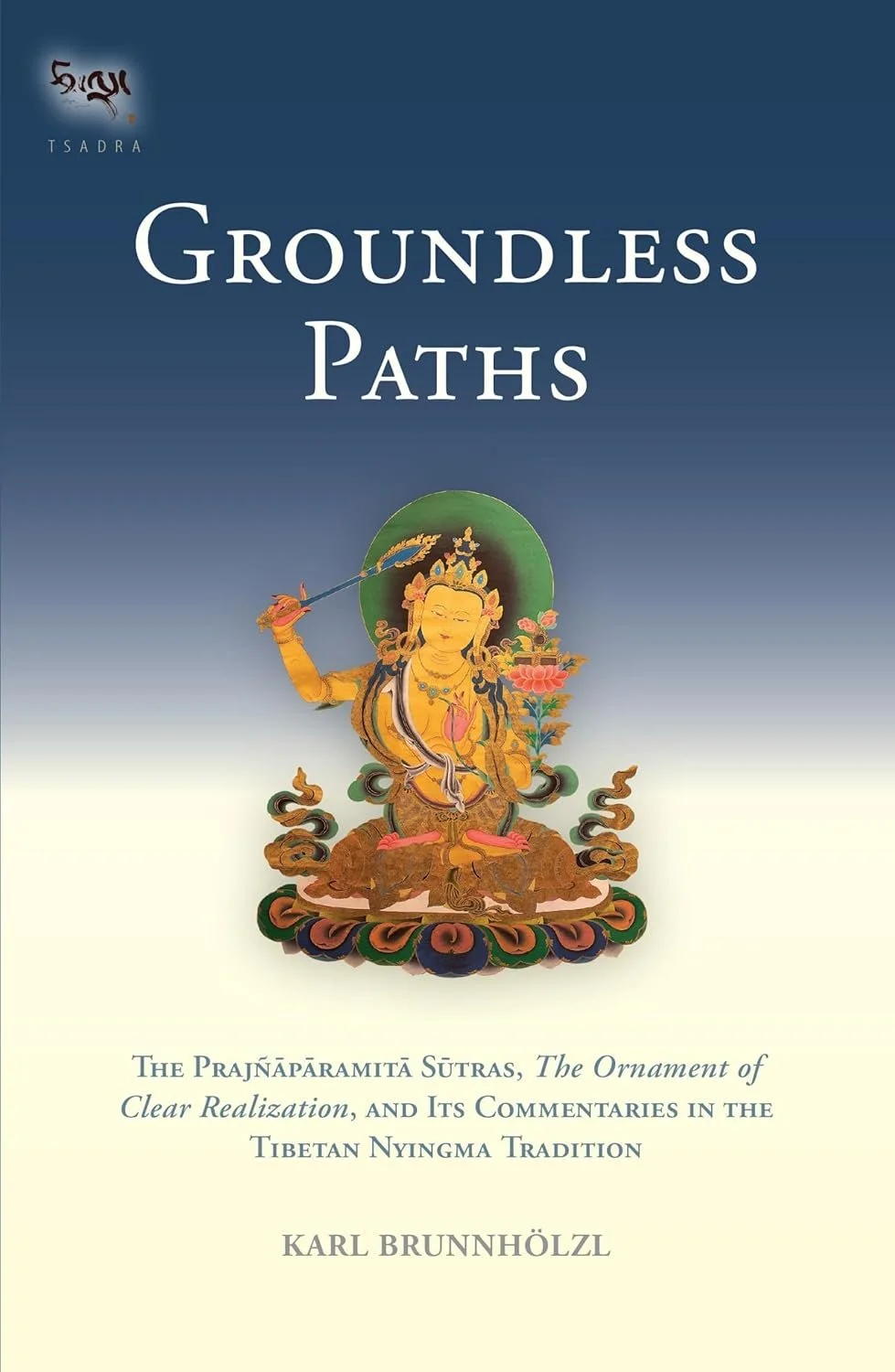
Groundless Paths
What is this book about?
This study of The Ornament of Clear Realization in the Tibetan Nyingma School consists mainly of translations of Maitreya’s famous work and its two commentaries by Patrul Rinpoche. These are supplemented by extensive excerpts from the commentaries by six other Nyingma masters, such as Mipham Rinpoche. Thus, the book closes a long-standing gap in the scholarship on the prajñāpāramitā sūtras and the literature on paths and bhūmis.
Who is this book for?
It is of interest to anybody interested in the universal message of the prajñāpāramitā literature (emptiness) and its descriptions of what happens in the minds of those persons who contemplate this message. In addition to discussing this path in general, the book particularly highlights the unique understanding of prajñāpāramitā by the Nyingma school of Tibetan Buddhism.
Learn more & buy
-

Prajñāpāramitā, Indian “gzhan stong pas”, and the Beginning of Tibetan gzhan stong
What is this book about?
In the Tibetan Buddhist tradition, there is an ongoing debate as to whether Shentong Madhyamaka (“empty-of-other”) was “invented” by Tibetans or whether it has Indian precursors. This publication discusses evidence for a number of typical Shentong positions in several Indian texts and provides a sketch of the transmission of the five works of Maitreya from India to Tibet as well as the beginning of a Tibetan Shentong, tracing some classical Shentong assertions in three early Tibetan works before Dölpopa Sherab Gyaltsen, considered to be the founder of the Shentong tradition.
Who is this book for?
This is a scholarly book mostly for specialists but also of interest for educated Buddhist readers wishing to dive into the origins and Indian background of one of the great living traditions of Tibetan Buddhism.
Learn more & buy
-

Mining for Wisdom in Delusion
What is this book about?
Maitreya’s Distinction Between Phenomena and the Nature of Phenomena discerns the illusory world of saṃsāra from its ultimate nature and describes the transition from the one to the other. This process of “mining for wisdom within delusion” includes the most detailed explanation of nonconceptual wisdom—the main driving force of the path as well as its ultimate result—in Buddhist literature. The commentaries put the text into the larger context of Indian Yogācāra and show that it is not just a scholarly work but a practice manual for making its contents a living experience. The book also discusses the remaining works of Maitreya, their transmission from India to Tibet, and various views about them.
Who is this book for?
This book is of general interest to anybody interested in exploring the Buddhist view of saṃsāric delusion, how to become liberated from it, and what the result of buddhahood is like. In particular, those who wish to gain a deeper understanding of nonconceptual wisdom—the main driving force of the path as well as its ultimate result—will find rich material here.
Learn more & buy
-
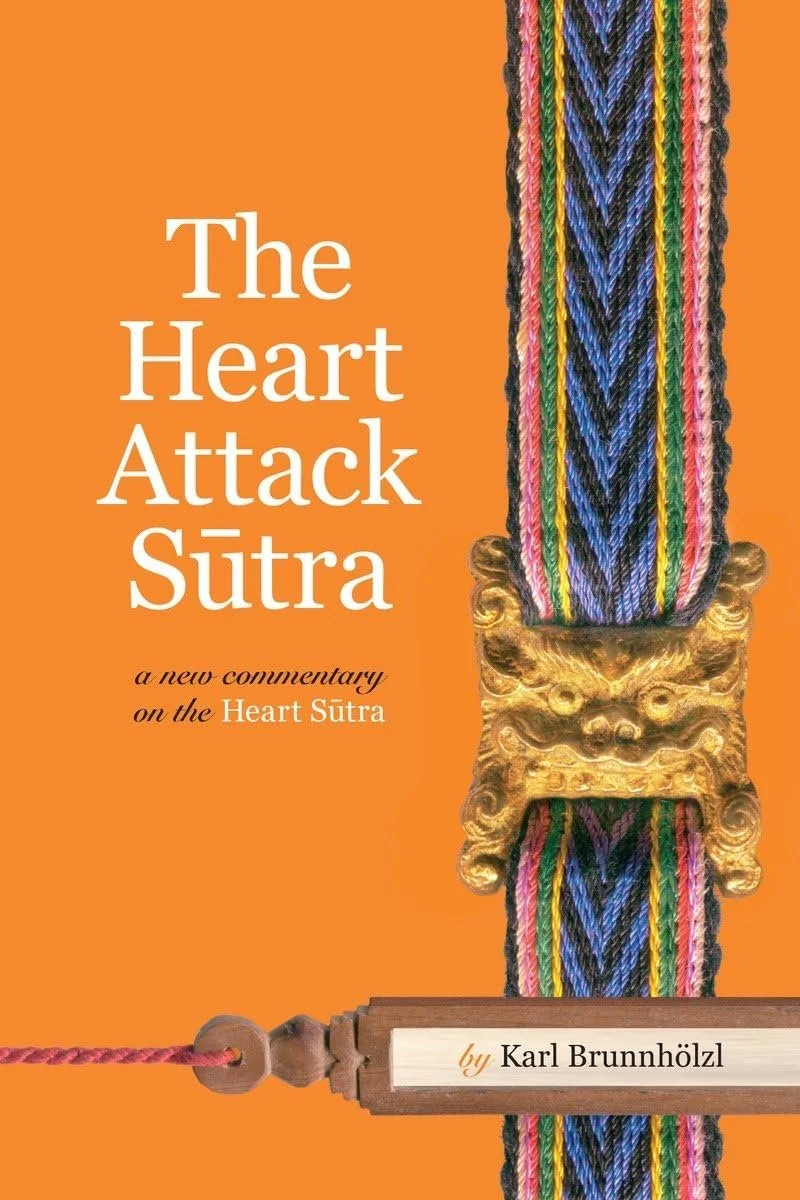
The Heart Attack Sutra
What is this book about?
This book explores traditional and contemporary approaches to understand the meaning of the Heart Sutra. Its key message is to let go of all our troubles. It is a sweeping attack on all our belief systems, even the teachings of the Buddha himself. The title of the book refers to some followers of the Buddha having suffered heart attacks when grasping the radical message of the basic groundlessness of our existence. At present, maybe the most important line of this sutra is that “bodhisattvas have no fear,” since fear seems to be the main problem in the world today. According to the Buddha, overcoming fear is not accomplished by shutting down and building more walls around us, but by opening up and seeing the illusory nature of everything that seems to threaten us, including ourselves. Thus, we are encouraged to compose our own personal version of the sutra as a contemplative tool for daily life. The book also includes a meditation that internally replays the teaching situation of the sutra with its major players.
Who is this book for?
This book is of general interest to anybody interested in exploring how the Buddha’s teachings on emptiness are not some kind of nihilism, but are meant to lead us to being more relaxed, open, and compassionate to ourselves and others. In particular, those who wish to gain a deeper understanding of the Heart Sutra will find rich commentarial material from both traditional and modern approaches.
Learn more & buy
-
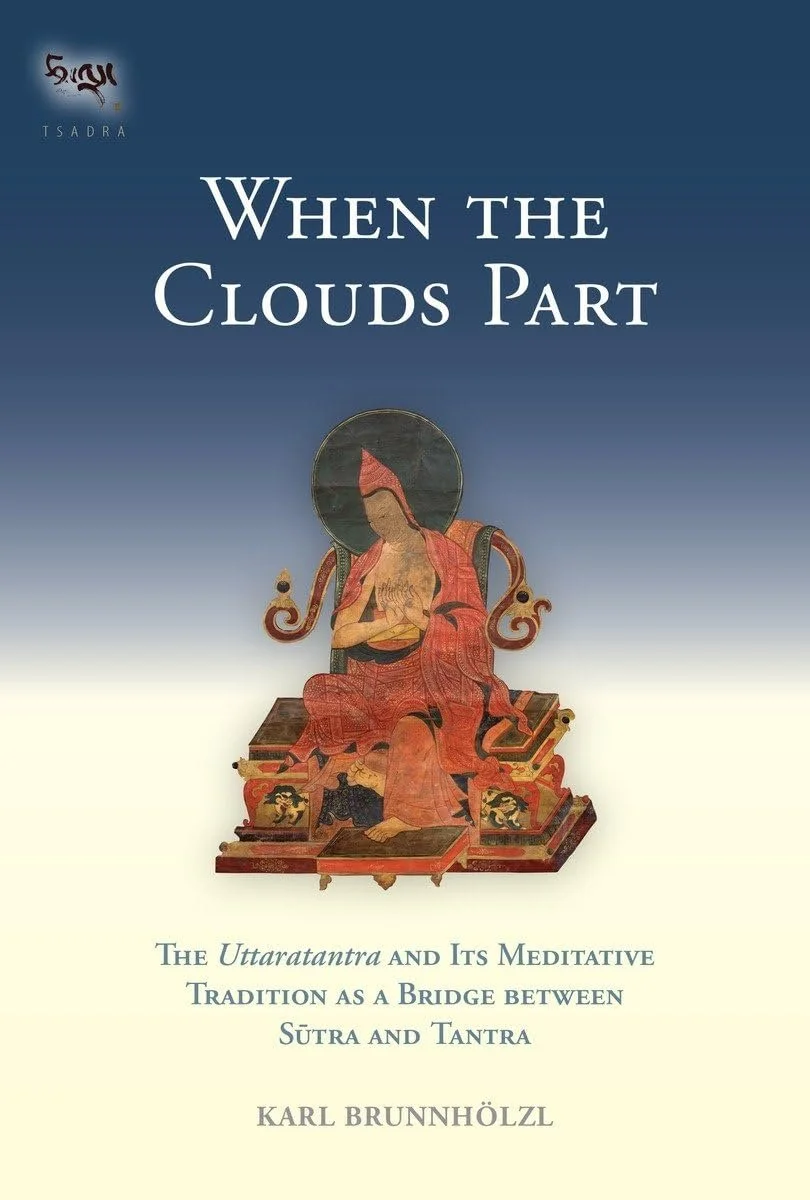
When the Clouds Part
What is this book about?
The book discusses a wide range of topics connected with the notion of “buddha nature” (tathāgatagarbha) as presented in Indo-Tibetan Buddhism, which is the innate potential in all living beings to become a fully awakened buddha. The book gives an overview of the sūtra sources of the tathāgatagarbha teachings and the different ways of explaining the meaning of this term. In particular, it includes new translations of the Uttaratantra (Ratnagotravibhāga), the primary Indian text on the subject, its Indian commentaries, and two (hitherto untranslated) commentaries from the Tibetan Kagyü tradition. Most importantly, the book investigates in detail the meditative tradition of using the Uttaratantra as a basis for Mahāmudrā instructions and the Shentong approach. This is supplemented by translations of a number of short Tibetan meditation manuals from the Kadampa, Kagyü, and Jonang schools that use the Uttaratantra as a work to contemplate and realize one’s own buddha nature.
Who is this book for?
Presenting many hitherto untranslated Indian and Tibetan key scriptures on buddha nature in the light of classic and comprehensive commentaries as well as pithy meditation manuals, the book should appeal to scholars and practicing Buddhists alike, as well as anyone interested in the nature of the mind. It is of particular interest to those who wish to know more about and apply what is called “the meditative tradition of the Maitreya texts” in its connection to Mahāmudrā instructions.
Learn more & buy
-

A Compendium of the Mahāyāna: Asaṅga’s Mahāyānasaṃgraha and its Indian and Tibetan Commentaries
What are these books about?
These three volumes discuss virtually everything anybody could want or need to know about the Yogācāra school, one of the two mainstream approaches of the mahāyāna.
They contain the first complete English translations of the Mahāyānasaṃgraha by Asaṅga, arguably the most important and comprehensive Indian Yogācāra text, and all its available Indian commentaries, as well as a wealth of supplementary materials. The volumes also offer a study of the existing fragments of the Abhidharmamahāyānasūtra as the main sūtra source of the Mahāyānasaṃgraha, as well as a comprehensive exposition of the origin and development of two key concepts in Yogācāra works—the ālaya-consciousness and the afflicted mind (kliṣṭamanas)—in the Indian sources. The ten chapters of the Mahāyānasaṃgraha present a complete overview of the mahāyāna in general and the Yogācāra view in particular, such as the nature and operation of the eight kinds of consciousnesses, the often-misunderstood notion of “mind only” (cittamātra), dependent origination, the cultivation of the path, and its fruition in terms of the four wisdoms and the three kāyas of a buddha.
Who are these books for?
Let’s face it: given its size and contents, this is not light bedtime reading or a book of the “mindfulness” variety. It is primarily for those interested in Yogācāra School of Indian mahāyāna Buddhism and Buddhist scholars. However, since it covers a wide range of mahāyāna topics in general, it is also of interest for educated Buddhist readers. It’s not a book for beginners or someone who wants an introduction to Buddhism.
Learn more & buy
-

A Lullaby to Awaken the Heart. The Aspiration Prayer of Samantabhadra and its Commentaries
What is this book about?
The Aspiration Prayer of Samantabhadra, one of the most famous and often-recited Dzogchen texts, is both an aspiration by the primordial buddha, Samantabhadra, for all sentient beings to become buddhas and our own buddha nature’s wake-up call for us. It outlines the profound Dzogchen view in a nutshell and gives pithy instructions on how to discover the five buddha wisdoms in the very midst of our afflictive emotions. Besides an extensive introduction on the prayer’s background, this book also offers commentaries by the Nyingma masters Jigmé Lingpa and Tsültrim Sangpo, as well as the Fifteenth Karmapa.
Who is this book for?
This book is for those generally interested in an introduction to the basics of the Dzogchen view and meditation. More specifically, it is for those wishing to better understand the meaning of The Aspiration Prayer of Samantabhadra and use it as a practice tool to reveal the wisdom innate in our emotions.
Learn more & buy
-

Luminous Melodies: Essential Dohās of Indian Mahāmudrā
What is this book about?
This book contains a collection of songs of realization, carefully selected from the large compendium The Indian Mahāmudrā Texts compiled by the Seventh Karmapa. These often spontaneously composed songs convey a sense of freedom, openness, and bliss. They range from overviews of the entire Mahāmudrā path to pithy four-liners directly pointing out the buddha within us all. The authors include famous masters such as Saraha and Nāropa, kings, courtesans, ḍākinīs, farmers, and many others from diverse backgrounds, showing that realization is accessible to all of us.
Who is this book for?
The book is for those wishing to get a taste of the vast tradition of Indian Buddhist songs of realization, looking for inspiration, wisdom teachings, captivating poetry, and beautiful imageries.
Learn more & buy
-

Milarepa’s Kungfu: Mahāmudrā in his Songs of Realization
What is this book about?
This book contains the great yogi Milarepa’s pith instructions originally sung to his disciple Rechungpa. Milarepa’s direct offering of his own profound realization after many years of intensive practice is called “kungfu” here: “time spent in skillful and diligent training” in realizing mind’s nature. In his Ultimate View, Meditation, Conduct, and Fruition, Milarepa gives profound instructions on progressing on the path and avoiding pitfalls: the view is the ground from which the proper meditation, conduct, and fruition of mahāmudrā arise; meditation is the familiarization with that view; conduct is this familiarization’s natural outflow; and the fruition is to return to the basic ground.
Who is this book for?
This book is for those who wish to explore Milarepa’s Mahāmudrā teachings and how to use them in their own practice.
Learn more & buy
-

Sounds of Innate Freedom: The Indian Texts of Mahāmudrā (Vol. 1)
What is this book about?
Following an extensive general introduction to mahāmudrā and the transmission of Indian Mahāmudrā texts and songs of realization, this first volume of the Seventh Karmapa’s collection of Indian Mahāmudrā texts begins with its introductory catalogue. The actual texts of the collection begin with the only tantra in this anthology—the Anāvilatantra—and its sole Indian commentary. The remainder consists of a long-established set of mahāmudrā texts called “The Seven Siddhi Texts” and two additional works—Indrabhūti’s Sahajasiddhi and its commentary by princess Lakṣmīṃkarā—often considered related to that set.
Who is this book for?
This volume is of interest for those wishing to learn about Mahāmudrā and the transmission of Indian Mahāmudrā texts and songs of realization and those who want to explore some of the earliest Mahāmudrā-related tantric treatises.
Learn more & buy
Forthcoming on Wisdom Publications
-

Sounds of Innate Freedom: The Indian Texts of Mahāmudrā (Vol. 2)
What is this book about?
This second volume consists of two long-established sets of Indian mahāmudrā works: “The Sixfold Pith Cycle” and Maitrīpa’s “Cycle of Twenty-Five Dharmas of Mental Nonengagement,” as well as several commentaries by Maitrīpa’s Indian students. Thus, since the bulk of the texts in this volume is by Maitrīpa and his students, it could be called “the Maitrīpa volume” within the Seventh Karmapa’s Mahāmudrā collection.
Who is this book for?
This volume is of specific interest for those wishing to explore the great master Maitrīpa’s legacy of Mahāmudrā and the set of texts called “The Sixfold Pith Cycle.”
Learn more & buy
-

Sounds of Innate Freedom: The Indian Texts of Mahāmudrā (Vol. 3)
What is this book about?
This third volume consists of songs of realization, commentaries on some of these songs, and treatises on mahāmudrā. The majority consists of works attributed to Saraha, most prominently his trilogy of dohās (“King Dohā,” “Queen Dohā,” and “People Dohā”) and several commentaries on it. Given this, this third volume could be called “the Saraha volume” within the Seventh Karmapa’s Mahāmudrā collection.
Who is this book for?
This volume is of specific interest for those wishing to explore the great master Saraha’s legacy of Mahāmudrā.
Learn more & buy
-
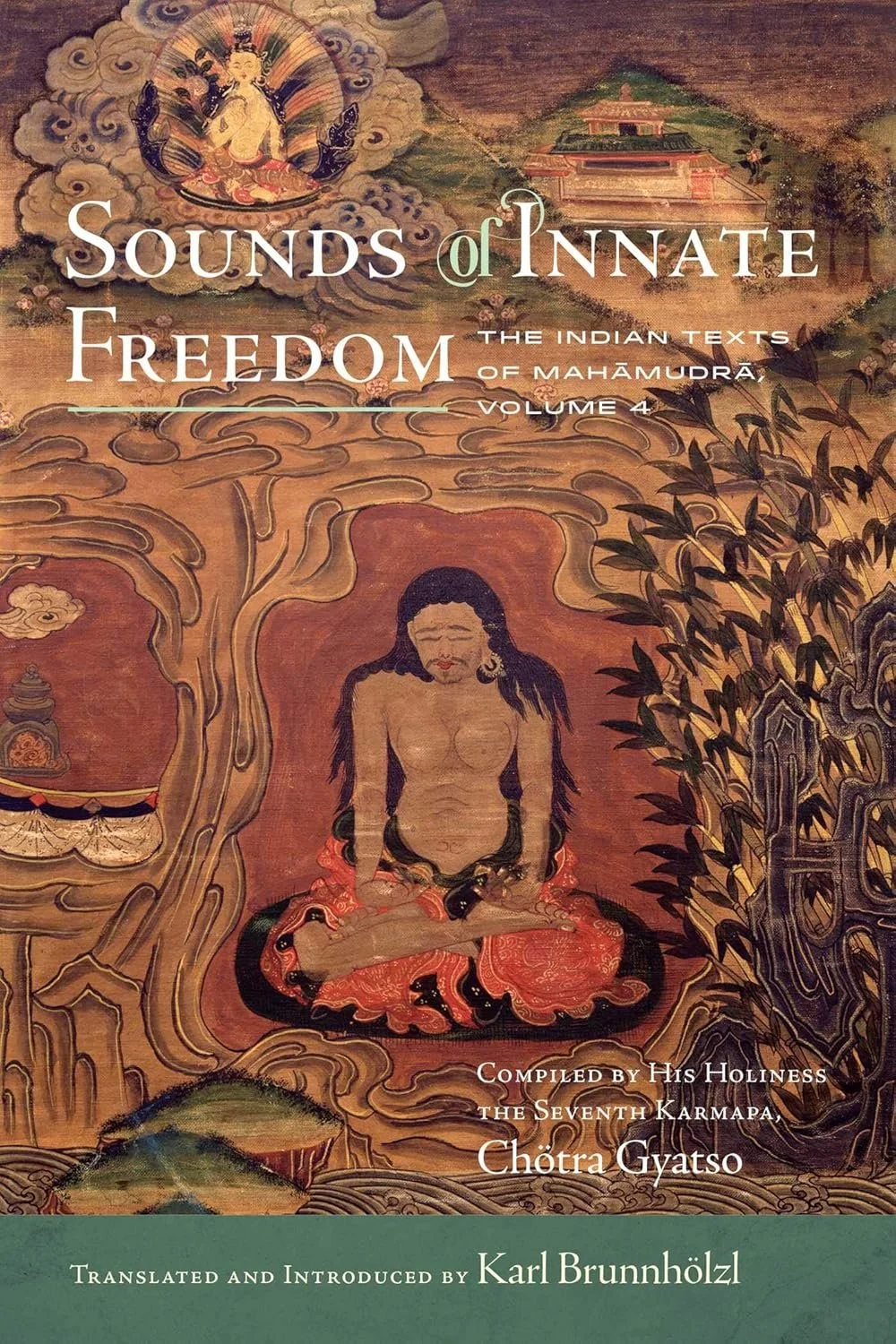
Sounds of Innate Freedom: The Indian Texts of Mahāmudrā (Vol. 4)
What is this book about?
This fourth volume consists of songs of realization, commentaries on some other songs, and short treatises. The authors include famous mahāsiddhas such as Virūpa, Tilopa, Nāropa, Nāgārjuna, Āryadeva, Saraha, Maitrīpa, and Kṛṣṇa. Of particular interest is A Commentary on the Treasury of Conduct Songs (Caryāgītikoṣa), a commentary on a famous collection of fifty tantric songs, probably from Bengal, full of beautiful imageries and intricate symbolisms, sometimes perplexing or even “crazy” in style.
Who is this book for?
This volume is interesting for those wishing to explore the songs of famous mahāsiddhas such as Virūpa, Tilopa, Nāropa, Nāgārjuna, Āryadeva, Saraha, Maitrīpa, and Kṛṣṇa, as well as the stunning symbolism and imagery of a famous anthology of tantric songs and its commentary.
Learn more & buy
-

Sounds of Innate Freedom: The Indian Texts of Mahāmudrā (Vol. 5)
What is this book about?
The bulk of the fifth volume consists of songs of realization by various mahāsiddhas and others, many of them by Atiśa, the mahāsiddha Jaganmitrānanda, Saraha, Kṛṣṇa, Kambala, Ḍombipa, Nāgārjuna, Lūhipa, and Maitrīpa. There are also seven anthologies of tantric songs by a wide variety of male and female siddhas, yogīs, yoginīs, and ḍākinīs.
Who is this book for?
This volume is of particular interest for those wishing to explore the richness and beauty of spiritual tantric songs by a wide range of male and female authors from different backgrounds.
Learn more & buy
-

Sounds of Innate Freedom: The Indian Texts of Mahāmudrā (Vol. 6)
What is this book about?
This sixth and final volume consists mainly of formal tantric treatises, some of them famous and often-cited. It also contains two short dohās and four primarily sūtra-based texts (two of them ascribed to Nāgārjuna).
Who is this book for?
This volume is specifically interesting for those wishing to explore classical tantric treatises related to Mahāmudrā.
Learn more & buy
Forthcoming on Wisdom Publications
